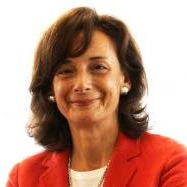
One billion women – more than 40% of the women around the world – still don’t have access to financial services, despite women’s growing share of global consumer spending. Having a safe place to keep and save money, obtain credit, insurance, pension or other financial services can enable financially excluded one billion women from around the world to gain better control over their lives and improve the lives of those around them.
Benefits of giving women access to finance extend to children and beyond, as women spend money on health, education and other ways that benefit their offspring. As our Voice and Agency research shows, in some countries, like South Africa and Brazil, granddaughters are more likely to be enrolled in school and are healthier when grandmothers receive pensions.
There has been great progress over the last three years in providing access to financial services for the “unbanked”. Between 2011 and 2014, 700 million people gained access to a transaction account, according to the latest Global Findex data.
But women continue trailing behind men in obtaining access to finance . Overall, the gender finance gap remains at 9% in developing countries, although in some parts of the world it’s much higher. In South Asia, for example, only 37% of women have access to a bank account, compared to 55% of men. There are many benefits of helping to reach these women: women spend money on health, education and other ways that benefit their children.
However, women often face multiple constraints to accessing financial services, according to the 2012 World Development Report on Gender Equality and Development. Women may not be aware of the services available to them or may be prevented from making use of them. They may live too far from financial institutions, or may not be able to afford the travel fare. Some women may not be allowed to go anywhere by themselves.They often feel like second-class customers to banks. Often, women lack collateral for a loan, which hinders their ability to start a business. Together, these constraints are a toxic recipe for financial exclusion. In addition, according to a GSMA report, more than 200 million women lack access to a mobile phone, which means they’re excluded from digital banking opportunities.
Every country is different, and constraints can vary significantly. However, we need to address these barriers to financial inclusion as we look for solutions to close the gender finance gap . At the World Bank Group-IMF Spring Meetings in April, the World Bank Group committed to enable one billion adults to gain access to a transaction account as part of a call for Universal Financial Access by 2020 (UFA2020). We brought together a broad coalition of private and public sector partners, who committed to doing the same by extending their work and services to underserved populations.
Examples of commitments our partners made include Visa committing to provide electronic payment accounts to another 500 million underserved people, and MasterCard committing to reach 500 million people currently excluded from the financial mainstream. Bandhan Bank committed to more than 20 million savings accounts and 10 million credit customers, while Telenor Group committed to enable 50% of its customers to use their mobile phones for financial services. Microcredit Summits Campaign committed to expand its outreach to at least 53 million of the world’s poorest families, while the World Council of Credit Unions committed to reach a further 50 million people through credit union services.
Payment systems are a critical enabler of financial access: transaction accounts allow people, including the “unbanked”, to make and receive payments in a cost-efficient way. The World Bank Group has supported comprehensive payment system reform in more than 100 countries, and led country efforts to decrease the cost of sending money home. These efforts are estimated to have saved migrants and their families up to $62.5bn.
The International Finance Corporation (IFC) estimates that women own more than 30% of registered businesses worldwide. But only about 10% of female enterpreneurs have access to the capital needed to grow their businesses. Unfavorable lending practices and regulations have produced a nearly $300bn gap in financing for women-owned businesses.
With its Banking on Women program, the IFC has worked with banks to address shortfalls in funding for women-owned enterprises, investing more than $800m in credit lines for women-owned businesses to help improve access to finance for small and medium-size enterprises. It has also supported banks in advancing gender balance in their workforce and providing access to women entrepreneurs in corporate supply chains.
Already, both the private and public sector have started reaching out to better understand what kind of financial products and services can help women manage their assets more favorably and safely.
But we need to do more. We need to listen carefully to what women want and need from the financial industry and then define how best to provide those products and services. By working together, we can achieve the scale and sustainability required to achieve universal financial access. Without ensuring women are included, we can’t reach this goal. Without closing the stubborn gender finance gap, we can’t achieve gender equality , or hope to reduce poverty and boost shared prosperity.
This blog post is also available at The Guardian.


Join the Conversation